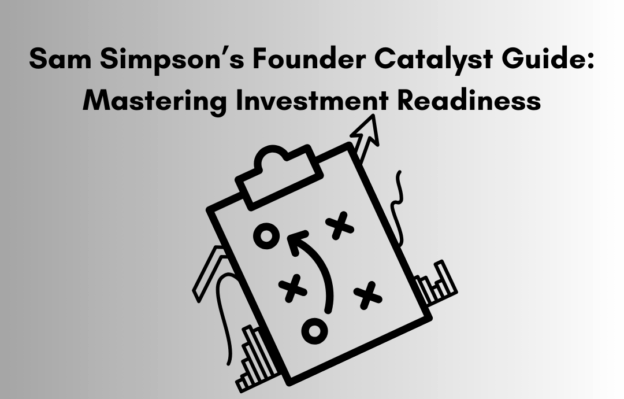Are you looking to pitch to investors? How about a list of key items to cover? Sam Simpson, serial entrepreneur and founder of Founder Catalyst, has a useful article on the key points to pitch to investors called on “Nineteen easy steps to scare off potential investors”. This article categorises the key recommendations by group, where each group represents a common theme or aspect of startup fundraising and provides insights into potential pitfalls and best practices within that category.
Contents
Advice
Valuation and Funding Strategy
Startups should set realistic valuations and consider staggered funding rounds to attract investors effectively.
- Realistic Valuation: Sam emphasizes the importance of setting realistic valuations for your startup. Overvaluing your company can deter potential investors, especially if your expectations are far higher than industry standards.
- One Huge Raise: Trying to raise a massive amount of capital in a single funding round is discouraged. Startups often raise smaller amounts initially, prove their concept, and then seek larger rounds at higher valuations.
- No rush to get SEIS/EIS advance assurance: Delaying the process of getting SEIS/EIS advance assurance can be a red flag for investors, as it suggests a lack of preparedness on the part of the startup.
- Chasing VC cash during pre-seed: The article advises against spending too much time chasing venture capital funding during the pre-seed stage, as early-stage startups are often considered too early for VC investment.
Corporate Structure and Share Classes
Keeping the share structure simple and avoiding complex subsidiary structures is often preferred by investors.
- Creating many share classes: Overcomplicating the share structure with multiple classes can confuse investors and potentially put SEIS/EIS eligibility at risk.
- Setting up as a CIC: Choosing a Community Interest Company (CIC) structure may not be the best route for startups seeking angel investment, as it can be unfamiliar and may involve additional legal costs.
- Subsidiary/group structure: Overcomplicating your corporate structure can be a drawback, as investors prefer straightforward investments.
Team and Leadership
Finding the right balance in the founding team’s size and skill set is crucial for investor confidence.
- Having too many founders: While solo founders may face challenges, having too many founders can also be problematic. Investors prefer a balanced founding team with complementary skills.
- Delay in creating employee options: Failing to create an employee option pool before seeking investment can lead to investor concerns about dilution.
- Paying a high founder salary: Taking a large salary as a founder may be seen as a lack of commitment to the business and can concern investors.
- Repaying a director’s loan with investment money: Using investment funds to repay a director’s loan can be a red flag, as investors expect their funds to be used for business growth.
- Aiming for a lifestyle business: Investors typically want to see startups focused on growth and potential exits, not just lifestyle businesses. Investors expect an “exit” so make sure you supply one.
Pitch and Communication
Presenting a clear and transparent pitch with specific details, rather than relying on buzzwords, is essential to gain investor trust.
- Playing ‘Investor Bingo’: Using buzzwords like AI and blockchain without substance can make your pitch seem insincere and turn off investors.
- Unclear terms: Failing to provide clear information about the investment amount, valuation, and other terms can be frustrating for investors.
- Unjustified “hockey-stick” sales projections: Presenting overly optimistic sales projections without a clear basis can harm credibility.
- Exaggerating product capabilities: Misrepresenting your product’s capabilities can damage trust with investors.
Legal and Intellectual Property
Ensuring clear ownership of intellectual property and addressing university spinout complications can ease investor concerns.
- Confused IP ownership: Investors scrutinize the ownership of intellectual property, so the startup needs to own or have a clear path to owning its IP.
- University spinout complications: Startups originating from universities may face unique challenges related to equity ownership and intellectual property.
Investor Relations and Transparency
Ignoring investor requests and not providing what they ask for can hinder the investor-founder relationship.
- Ignoring investor requests: Thinking “I know best” and failing to provide what investors request, such as a pitch deck, can hinder the founder-investor relationship.
Conclusion
In conclusion, Sam Simpson’s insights from Founder Catalyst offer a vital blueprint for entrepreneurs aiming for successful investment engagement. The article and checklist together highlight the necessity of not only being aware of investor expectations, like realistic valuations and clear communication, but also the importance of a strategic approach to building genuine investor relationships. Entrepreneurs would do well to consider this guidance not just as a pre-investment formality but as a foundation for long-term business growth and investor partnership.
